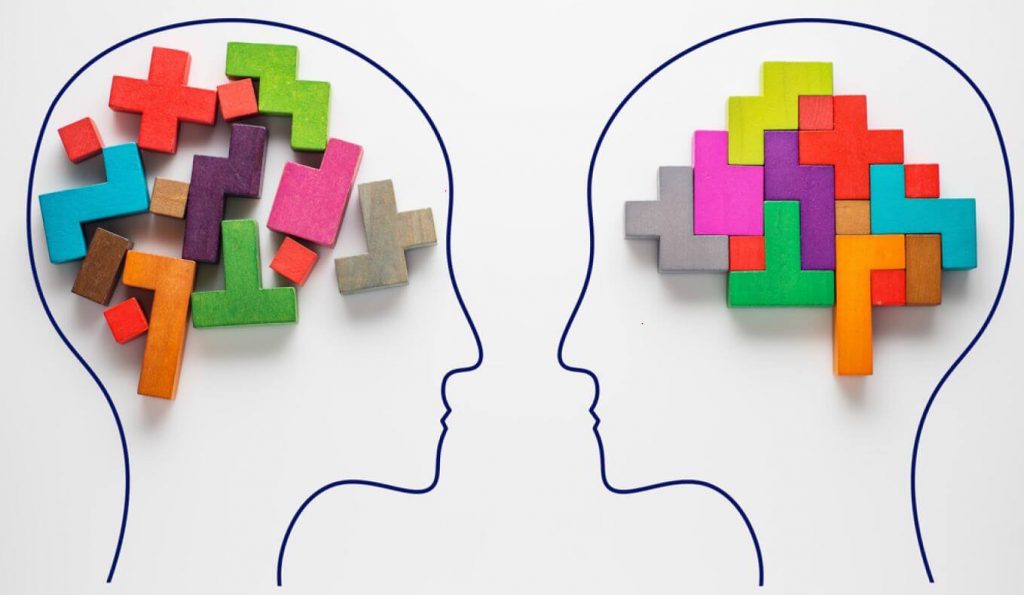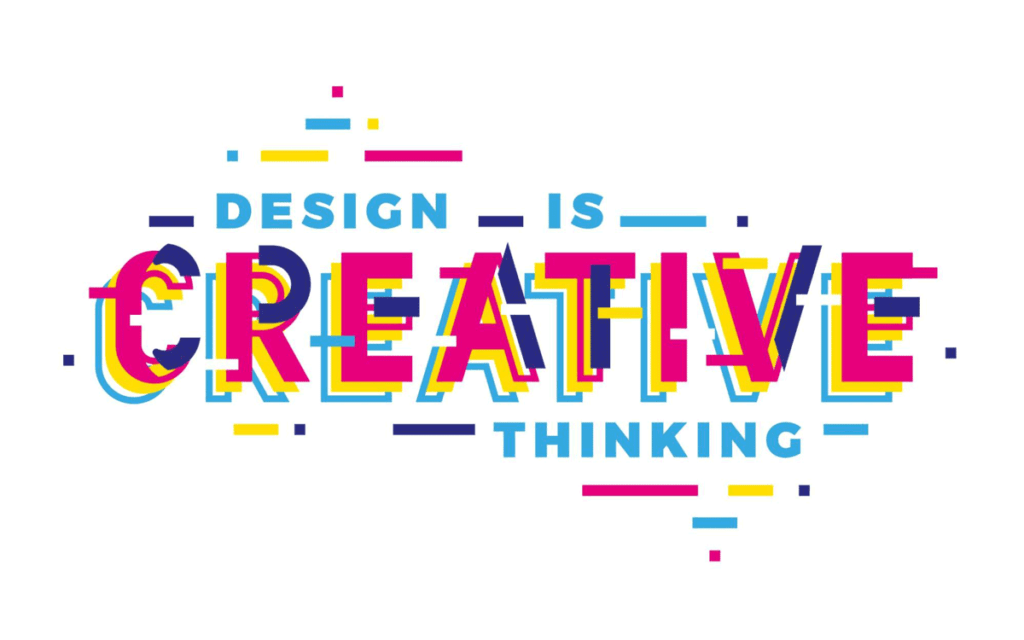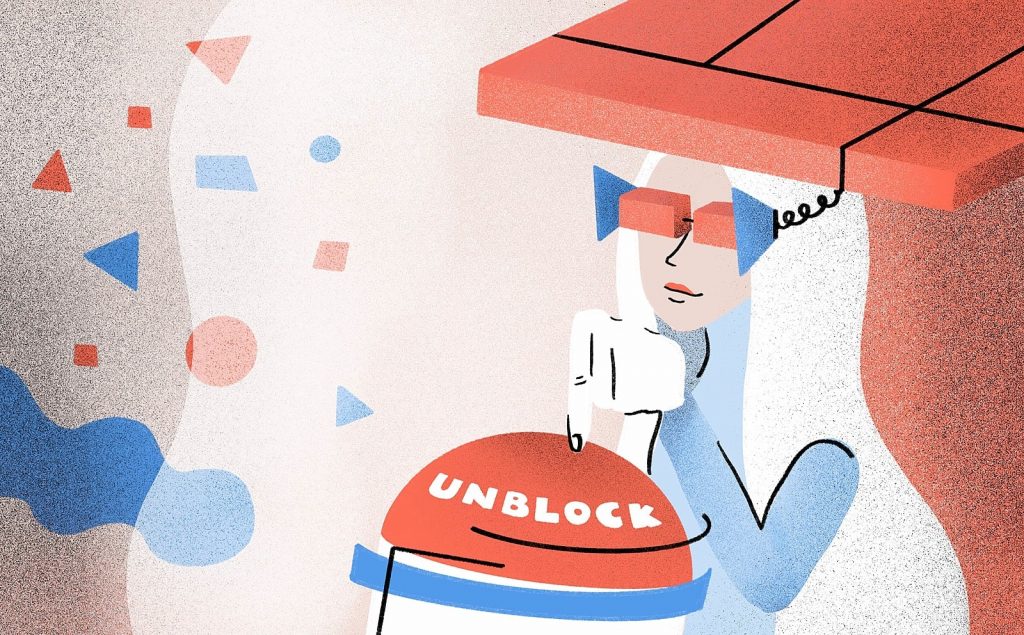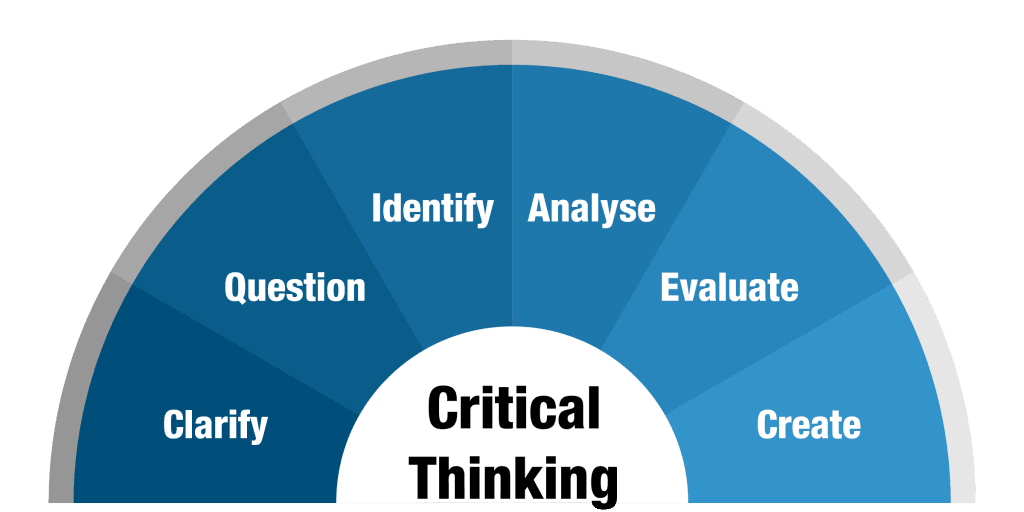What Is Creative Thinking and Why Does It Matter?
Creative thinking is the ability to be open to new ideas, concepts, and possibilities. Creative thinking allows you to look at something from a different perspective or make connections between seemingly unrelated things. Creative thinkers think outside the box and can take the most ordinary situations and find solutions that haven't been thought of before.
We're used to thinking about creative thinking in terms of art and design. But there's a surprising amount of overlap between these two areas, and design is essential for innovation. If you want to innovate, you need to think creatively. But why is it so important? Because innovation requires taking risks.
You must be willing to go outside your comfort zone. And to do that, you need to be willing to think differently. So when we say creativity matters, we're not just talking about visual or artistic creativity. When you innovate, you need to think more creatively than your competitors. Creativity isn't limited to the arts. We can find it in nearly every aspect of life as it's the foundation of innovation.
We live in a world where we are constantly bombarded with stimuli. We are inundated with information and ideas. We often lack the time, skills, and resources to sort through the clutter and get the best insights and information. The result is that we are left feeling overwhelmed and confused.
In this article, I'll discuss creative thinking and how it can help you work smarter, not harder, so you can develop the skill of sorting through the data and creating insights.
Table of Contents
What Is Creative Thinking?

Creative thinking is the ability to generate ideas and solutions to problems. It's a skill that allows us to create, innovate, and solve the everyday challenges that confront us. We often consider creative thinking to be a talent or something that comes naturally to some people, but the fact is, we all possess this innate ability.
Creative thinking plays a significant role in our daily lives and can contribute to our success in work and life. Creative thinking can lead to breakthroughs in our personal and professional lives and improve how we live and work together.
The more we practice creative thinking, the more skilled we become at generating solutions to problems, identifying new ideas, and developing innovative ideas. When we learn to harness creative thinking, we develop skills and abilities that enhance our overall health and well-being.
There are four stages of creative thinking:
During Stage 1, we focus on problems. We ask ourselves what the problem is and look for a solution. If there isn't a specific solution to the problem, we try to identify some criteria that will help us find a solution.
In Stage 2, we start to explore solutions. We start to consider all of the possibilities available to us, and we begin to consider the feasibility and viability of the ideas.
During Stage 3, we narrow down the range of options we've explored and examine the merits of the various ideas. For example, we consider whether a new idea would provide more value than the current solution.
Finally, during Stage 4, we select the best idea. This stage requires us to weigh each option's pros and cons and decide which one will be the best choice.
What Does Creative Thinking Help Us Do?
- Hardcover Book
- Conklin, Wendy (Author)
- English (Publication Language)
- 225 Pages – 09/26/2023 (Publication Date) – Morgan James Publishing (Publisher)
When we practice creative thinking, we develop a range of abilities that help us succeed in our lives. These include:
Problem Solving
We can use creative thinking to solve problems. In Stage 1, we identify the problem, and we consider what it is that needs to change. In Stage 2, we start to devise ways to address the problem. In Stage 3, we narrow the range of possible solutions and decide on the best idea. In Stage 4, we select the best solution.
Finding Solutions
Creative thinking helps us find solutions to problems. When faced with a challenge, we can use creative thinking to generate ideas that will help us find a solution.
Analysing Solutions
We can use creative thinking to analyse the merits of solutions. For example, we can ask ourselves, “Would this new solution provide greater value than the current one?” Or, “Is this idea feasible?”
Innovation
We can use creative thinking to come up with new ideas. In Stage 1, we ask ourselves what the problem is and what it is that needs to change. In Stage 2, we explore all possible solutions we can come up with. In Stage 3, we narrow the range of possible ideas and decide on the best option. Finally, in Stage 4, we select the best idea.
Improving Relationships
We can use creative thinking to improve relationships. In Stage 1, we identify the relationship we want to improve and consider how to do so. In Stage 2, we look for ways to approach the relationship to facilitate a positive experience. In Stage 3, we choose a solution that will improve the relationship, and in Stage 4, we implement it.
Creating Something New
We can use creative thinking to create something new. In Stage 1, we consider the new thing we want to create. In Stage 2, we consider the components required to bring our idea to life. In Stage 3, we narrow down the range of possible components and choose the ones that best serve our goal. Finally, in Stage 4, we select the best component and use it to complete the idea.
Why Creative Thinking Matters

While some people are more naturally creative, it's not something you're born with. Instead, it's a process that's influenced by our environment, our upbringing, and the way we learn.
Creativity is a skill that you can learn. The more time and effort we spend using our brain's natural capacity to innovate and generate ideas, the better equipped we are to make essential decisions, solve problems, and succeed in our careers.
Here's why you need to be a creative thinker:
We constantly face new challenges and opportunities, and how we respond to them depends on how well we understand them. We are forced to solve problems that are complex and sometimes wholly unexpected. In these situations, we need to use creativity to identify possible solutions, weigh options, and decide which path to follow.
We also need creativity to build things we've never seen before. From inventing new products and services to developing novel ways of doing things, creative thinking helps us adapt to change and innovate in new ways. It makes it possible to be successful and thrive in the world of work.
But just thinking creatively isn't enough to succeed. How do you turn an idea into a reality? It takes more than just thinking.
You need to think carefully and thoroughly about the problem and your solution. You also need to put ideas to work through the execution process.
And you'll need a team of collaborators to help you test and refine your ideas. Creativity is only helpful if it's executed well.
What Is the Best Way to Develop Your Creative Thinking Skills?
- Fletcher, Angus (Author)
- English (Publication Language)
- 103 Pages – 09/15/2021 (Publication Date) – Independently published (Publisher)
It depends. In some situations, there are clear best practices and rules of thumb. In others, it's much less noticeable. But one thing is true for everyone: the more time and energy you devote to developing your creative thinking skills, the better prepared you'll be for whatever challenges you face.
So, where should you start?
Start by taking the time to think deeply about the problems you encounter at work, at home, or school.
Consider the following questions to help you understand and develop your creative thinking skills:
- What's the problem I'm facing, and what's the opportunity or challenge it presents?
- What assumptions am I making that might limit me in thinking creatively?
- What are some alternatives to how I'm currently solving the problem, and which of them might make it easier to achieve a solution?
- What might happen if I try a new approach to the problem? What would be the potential advantages, and what would be the potential disadvantages?
- How can I gather the information that will help me solve this problem?
- Are there any tools or resources available that could help me in my efforts to find solutions?
- How can I get feedback from others to help me evaluate different approaches and their merits?
- Where could I get training or other support for my efforts to solve this problem?
- Whom can I work with who may be able to offer insights that will help me to solve the problem?
- What other problems might I need to solve to get the job done?
- How can I evaluate the success of my solutions and the impact of my decisions?
- Are there any new developments or trends that I need to consider in solving the problem?
- Can I create a plan to manage the risks of trying a new solution?
- How can I ensure that the proposed solutions are feasible, effective, and potential for a high return on investment?
- How can I anticipate and prepare for any potential problems, such as risks, that might arise due to my actions?
Once you've considered the questions above, you may want to explore some new approaches and ideas in your personal life. This is a great time to think about some of the things you want to accomplish and the creative solutions you'd like to use to solve the problems you face.
Now that you know some of the benefits of being a creative thinker, and some of the best ways to develop your skills, it's time to look at ways you can use your creative thinking in the context of your career.
What Can Creative Thinking Do for Your Career?

As mentioned, having a creative mind is essential to finding and creating new ideas and can also be beneficial when faced with the challenges of your career.
Consider the following examples of ways that you can use your creative thinking skills to improve your career:
When choosing a career, consider what type of work excites you. You may want to consider a role where you can apply your creativity, such as a software developer, researcher, or journalist.
Develop your skills and knowledge. Whether reading, listening to podcasts, or going to conferences, actively engage in learning activities that will help you become a more valuable asset.
Take advantage of the flexibility that your career offers. Choosing when, how long, and even when you work can significantly benefit creativity.
Don't be afraid to ask for help. If you find that your creativity is holding you back from being successful in life, don't be afraid to ask for help. There are many people out there who are willing to help you succeed in your endeavours. Don't let yourself be limited by what you think you are capable of doing. The world is full of things you have never done before, but this doesn't mean you are incapable of doing them. It just means that you haven't yet done them.
The Importance Of Creativity
- Ray, Michael (Author)
- English (Publication Language)
- 240 Pages – 01/24/1989 (Publication Date) – Crown (Publisher)
To survive and thrive in this world, constantly creating something new is essential. Whether making music, writing a book, or inventing a new product, you must come up with something that others have never seen before.
Creativity is essential to any business, and you should use creativity to your advantage. By continuously working on improving your creative process, you'll grow as a person and as a professional.
So, how do you go about using creativity? Three main things can help you build up your creative muscle:
1. Focus on creativity.
When you think about it, there are many different ways to express yourself creatively. You can write a novel, compose a song, create art, or develop new ideas. You can even come up with ways to solve problems or find new solutions to existing ones.
Whatever you do, just keep working on it. Try a new writing technique or find a new way to improve your artwork. Your creativity will only improve if you constantly try to improve it.
2. Make sure you practice and take criticism.
The most important thing to remember about practising and taking criticism is that it doesn't matter how good you are or how much talent you have. You won't see improvement if you don't put in the time and effort to perfect your craft.
By practising every day, even just a little bit, you can improve your skill level and gain the confidence to take feedback from others.
Criticism is also an integral part of the creative process. If you take feedback well, you'll be able to incorporate it into your work and make improvements. By listening to your critics, you'll be able to identify your strengths and weaknesses, which is essential when you want to continue doing what you love.
3. Find inspiration.
The best way to develop your creative skills is to find ways to express yourself and your feelings. You can learn from other creatives by looking at the work of others and by finding your unique style.
For example, you can look at famous musicians or artists to get inspiration. When they created their original works, they could use the ideas and creativity that flowed from them.
You can also take inspiration from your favourite books, films, or video games. These forms of entertainment often involve creative characters or situations you can relate to.
Regardless of where you find your inspiration, make sure you're open to it. It can sometimes feel like only a few options are available for what you could do or express. But the more you try different things, the more inspiration you'll find.
When you're not doing any of these things, you're bound to run into roadblocks that prevent you from reaching your full potential as a creative person. So, if you're struggling to find inspiration or your creativity isn't as strong as it could be, these three things can help you.
How To Get Creative

1. Start with the basics.
If you want to get creative, you need to get started. The first step is to do something simple. For example, get a guitar and a mic if you want to start making music. Don't try to jump straight into a complex project, or it will be too overwhelming for you. Start with the basics and progress from there.
2. Learn a new skill.
If you want to get creative, then you must have an understanding of the creative process. You need to understand the rules, the tools, and the mindset that make a creative person.
Learning a new skill is a great way to gain this understanding and increase your creative ability. For example, if you're unfamiliar with video editing software, you can watch videos online or get an inexpensive laptop to edit photos and videos on your own.
3. Talk about your creative endeavours.
If you want to become more creative, it helps to get outside yourself. Talking to someone with a similar interest can give you ideas and inspire you to try new things.
For example, you could talk to people who have an interest in your chosen creative endeavour or go to creative gatherings.
The best way to become creative is to constantly try new things, make mistakes, and learn from mistakes.
Ultimately, it doesn't matter whether you're a musician, writer, or designer. You should use your creativity to make the world a better place.
If you can bring a little creativity into your daily life, it can add more value to your life and make your experience more enjoyable. And it doesn't matter if you're just starting out or already have a creative hobby. You can continually expand your creative pursuits to help you enjoy life a little more.
The Difference between Critical and Creative Thinking

Critical thinking involves logical analysis and careful reasoning. It is an essential life skill that helps us identify and evaluate information and data to make decisions. On the other hand, creative thinking is much more instinctive, allowing you to come up with solutions to problems without any previous thought.
Critical thinking is used in many ways in every area of life. For example, doctors and engineers use it to diagnose disease, lawyers use it to evaluate evidence, and artists use it to create new ideas.
Creative thinking is used in all areas of life, including the arts and humanities. Artists use it to create works of art, writers use it to develop ideas, and scientists use it to invent new ways of doing things.
Creative thinking is the core of innovation, which is the key to solving the world's most pressing problems. Companies are investing billions of dollars into developing new products and technologies because they recognise that innovative thinkers are the source of long-term competitive advantage.
Critical thinking is used to solve problems through the application of logic. When used correctly, it enables us to reach the correct conclusions and solve complex problems.
Creative thinking is more instinctive, intuitive, and emotional. It allows us to look at a problem or situation from a different angle and to come up with ideas that might be overlooked.
It may surprise you that we use creative thinking all the time. We always make decisions based on intuition, emotion, and subconscious clues. For example, when conversing with someone and can't remember what you wanted to say, it's likely because you used creative thinking.
You probably wouldn't ask someone if you wanted to hear them talk about their family or if you wanted to hear about their personal goals. But you would certainly ask if you wanted to hear about their work. Creative thinking is used daily to solve problems and develop new ideas.
Its Link To Entrepreneurship And Business

Creative thinking skills are what separate entrepreneurs from everyone else. Creative thinkers have a unique ability to look at a problem and create something new to solve that problem. Whether it's a new idea, product, or service, a creative thinker can identify a problem, develop a plan of action to fix it, and then execute that plan.
There are four areas of creative thinking that entrepreneurs need to tap into to run their businesses. These include:
Problem-Solving
In entrepreneurship, problem-solving is an essential skill. It's the process of identifying problems and finding solutions to them. This is why creative thinkers are among the most valuable employees for entrepreneurs. Creative thinkers can take a step back and examine a situation, often identifying a solution to a problem.
Creative thinkers can take a complex issue and break it down into minor parts, allowing them to see a problem from several angles. Their minds are filled with creative ideas and innovative ways to solve problems.
Creative thinkers can be found in any field. They are the people who think outside of the box to solve problems and find new ways to tackle old challenges. Entrepreneurs who leverage creative thinkers are likelier to come up with breakthroughs and new opportunities.
Creative Concept Generation
One of the most powerful things a creative thinker can do is generate new ideas. When faced with a challenge, it's easy to start brainstorming and thinking up solutions. But the problem is that many of the ideas we come up with are just that – ideas. Frequently, we can't fully realise the best solutions until someone steps up to implement the ideas.
With creative thinking, it's essential to know how to generate new ideas. Two methods work well:
- Brainstorming
- Creative Thinking
The key to brainstorming is opening your mind and thinking outside the box. Don't worry about how original your ideas are. Just write down every idea that comes to mind. If you're working with a team, you can help each other by keeping a list of potential solutions and noting the strengths and weaknesses of each.
Creative thinking is a bit different from brainstorming. In this case, you want to focus on a specific goal and generate as many unique and fresh ideas as possible. For example, brainstorming might be the wrong strategy if your business sells an existing product. Instead, you might use creative thinking to generate as many different marketing ideas as possible to identify the most effective one.
Once you have generated a handful of creative ideas, it's time to evaluate which ones to pursue.
Creative Execution
We often get so focused on the creative side of things that we forget the other half of the equation: execution. Sometimes, you won't be able to execute a new idea flawlessly. The best ideas sometimes aren't even fully formed. The goal is to make the best plan possible and execute it.
Execution is also about focusing on what you have control over. Too often, we waste time thinking about things that aren't in our control. Instead, we should focus on what we can and should do to get things done.
Creative thinkers are highly valuable for entrepreneurs. The reason is simple: they are the only ones always thinking of new ways to solve problems. With creative thinkers, it's never too early or too late to innovate.
Conclusion
Creativity is a broad term that can mean different things to different people. It's a skill that you can develop through practice, but you can't expect to be naturally creative.
The truth is that the world around us is changing at an unprecedented pace. And while technology has been enabling us to accomplish more in a shorter amount of time, it's also becoming increasingly harder to distinguish yourself from the crowd.
This is why using your creativity to build a successful business is essential. And since the market is so competitive, you'll need to be able to differentiate yourself from your competition.
That's where creativity comes in. It enables you to be original and stand out from the rest. And without it, you'll never be able to build a sustainable business.
Check out these resources on how to think creatively!
Last update on 2024-06-06 / Affiliate links / Images from Amazon Product Advertising API



